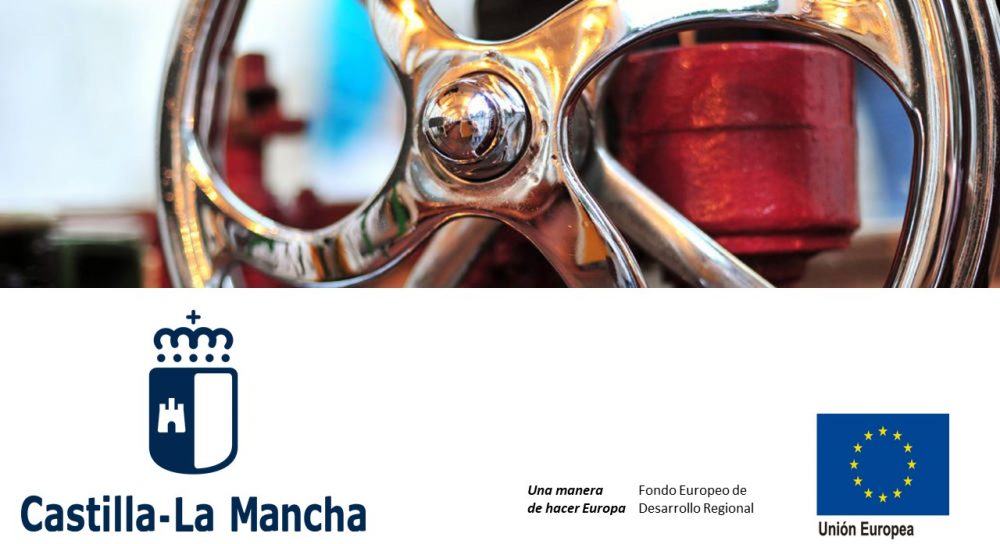Pollution of the natural environment is one of the main concerns of today’s society. Water pollution takes special importance in Castilla-La Mancha, due to its shortage, which could limit social and economic development in the future. On the other hand, it is also important to highlight the existence of soil contamination, another natural resource which is necessary and non-renewable. Some of the outlined environmental problems have their origin in a non-existent or inefficient management of wastes from anthropogenic activities. An optimal management of such wastes, using principles of circular economy, would imply both the mitigation of its environmental impact on ecosystems and human health as well as the recovery of the valuable resources contained in them.
Castilla-La Mancha has a long mining tradition from Roman’s age. Since then, mining activity has generated a large amount of wastes that, in many cases, were accumulated in the mining sites without proper treatment. Currently, these residues are abandoned because the companies that exploited these mining resources finished their activities some years ago, with the subsequent environmental problems. In accordance with the Strategic Plan for Non-Energy Mineral Resources of Castilla-La Mancha, Horizon 2020 (Permine), the mining wastes discharged into tailings, ponds or dams must be quantified and characterized, as well as the feasibility of recycling in order to their valorization.
In this context, the Bio-electro MineR2 project aims to combine biotechnology and electrochemical treatments to recover the usable resources, mainly metals and rare-earth elements, contained in abandoned mining wastes, thus achieving the environmental rehabilitation of contaminated environments through the application of circular economy objectives. To achieve this goal, the Bio-electro MineR2 project will address the following aspects:
1) Characterization of the abandoned wastes with higher hazard (acid drainage of mines, tailings and ponds) in metal mining sites of Castilla-La Mancha, in order to identify the most problematic types of waste from the environmental point of view, as well as those most susceptible of valorization through the tested technologies.
2) Study of the technical feasibility of valuable metals extraction from tailings deposited in abandoned mining ponds using bioleaching processes capable of generating a metal-rich effluent that will be subsequently treated for metal recovery.
3) Study of the technical feasibility of recovering the valuable metals contained in the acid mine drainage and the liquid effluent, rich in metals, from the bioleaching by means of electrochemical recovery processes based on electromigration and electrodeposition. These technologies will be complemented with constructed wetlands in order to achieve the zero discharge of hazardous wastes.
4) Study of the technical feasibility of phytoremediation, alone or in combination with electrokinetic remediation, for the abandoned tailings decontamination and the potential recovery of metals accumulated in plant tissues.
5) Economic and environmental analysis of the measures and technologies studied and the implementation of a combined treatment proposal for the decontamination of abandoned mining sites and the recovery of valuable resources.
The achievement of the established objectives will allow to have technologies that can give solution to the management of abandoned mining wastes, thus reducing its environmental impact on health and economics, and thus contributing to the progress and development of Castilla-La Mancha.
The outstanding experience and multidisciplinarity of the research team and the participation of three EPOs, belonging to both the public and private sectors, guarantee an adequate transfer of results to the industrial sector (Minas de Almadén y Arrayanes SA), as well as the interested public bodies (Guadiana Hydrographic Confederation and the Regional Government of Castilla-La Mancha).
Bio-electro MineR2 fits perfectly within the priority lines defined in the RIS3 of Castilla-La Mancha, being its link with Desafío 4. Achieve a higher efficiency of the resources and the Desafío 9. Sustainability: Facilitate the transition to a low carbón economy, more specifically with 9.1 Facilitate the development of a green economy “Promote the waste management, the prevention programs and the reuse of wastes”. Additionally, two PhD thesis will be carried out in the frame of the Project, which is in line with the Desafío 3. “Enhance the human resources in the knowledge economy” of the RIS3 of Castilla-La Mancha.
Proyecto Bio-electro MineR2
Proyecto financiado por la JCCM (SBPLY/19/180501/000254)
